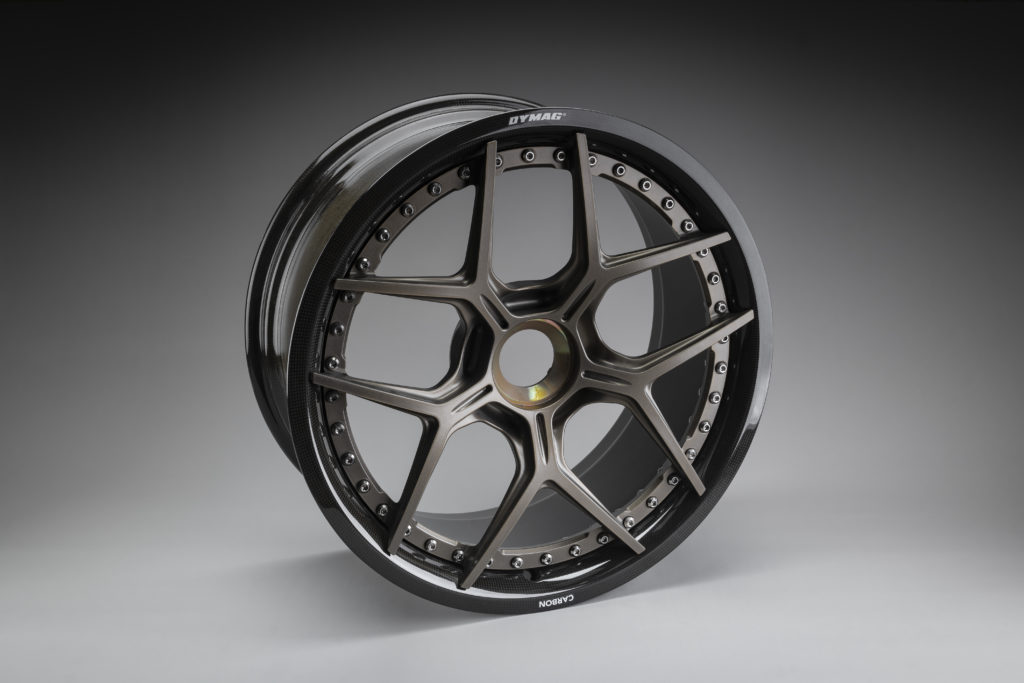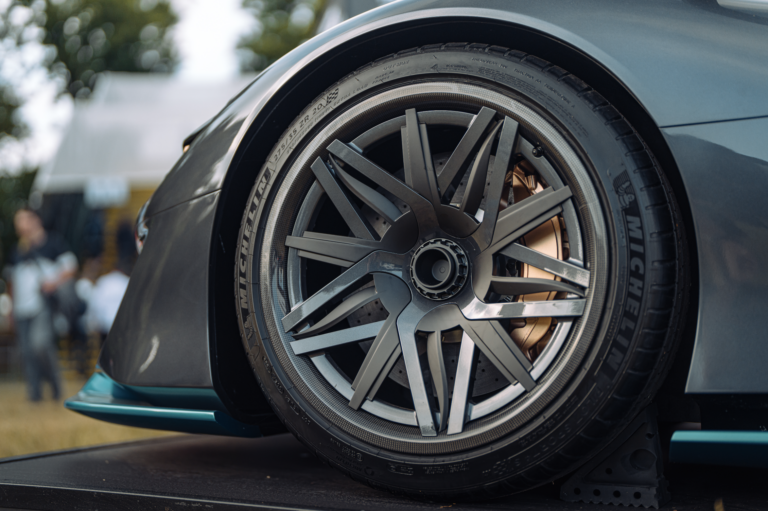Imagine, for a moment, you are given the task of designing an all-new electric car. Immediately you are faced with myriad challenges: keeping weight down, maximizing range, handling, aerodynamics – and optimizing refinement.
It’s not an easy task. While the very latest in battery technology is enabling ever greater distances between charges, cars – particularly SUVs and pickups – are also only getting bigger, creating even more problems to solve.
But what if there was an off-the-shelf component that could bring a host of benefits to any EV, from hypercar to pick-up? And all you need to do is literally bolt it on?
Tom de Lange is CEO of Dymag, a producer of carbon hybrid wheels. Here he talks about how lightweight wheel materials can bring multiple advantages to electric vehicles
Wheels have often been overlooked – but no longer. And that’s because of the huge benefits brought by lightweight materials, specifically carbon fiber. Increasingly the automotive industry is realizing just how big a step change carbon fiber wheels can bring to EVs.
For starters, they can be more than 50% lighter than a traditional alloy, yet also stronger and more durable. Further advantages come in terms of reduced unsprung mass, but also a reduced moment of inertia, with less energy required to accelerate and brake. Another dynamic benefit is a reduced gyroscopic force thanks to the lightness of the rim itself, with less steering effort is required.

These gains can make a huge difference on any EV, but a quantum leap on a BEV SUV or pickup. Why? Not that long ago, a 20-inch wheel might only be seen on a motor show concept, but now that size is standard on any sports car let alone a large SUV, with customers demanding 22-inch, 23-inch and even 24-inch rims.
Make a 23-inch wheel from traditional aluminum and the penalty is well over 20kg per corner – all of it un-sprung mass. An alloy wheel this size also operates at the very edge of that material’s capabilities, particularly if you place it on, say, a large electric pickup, which could weigh more than 3,000kg.
Controlling this rotating mass is also difficult, requiring stronger suspension, and in extreme cases an OEM can find that the addition of larger wheels literally shakes the vehicle apart. As SUVs and pickups get bigger and heavier, the last thing an engineer wants to do is add further weight. Carbon composite wheels can solve all these issues immediately.
What’s more, that step-change four-corner weight saving potentially brings range improvements too, while carbon fiber’s flexibility can also benefit NVH – a lifeline for any engineer developing an EV where the ICE is no longer masking nasty noises.
Factor in the ability to make a wheel more aerodynamic too, and very quickly it becomes easy to see why using carbon fiber can solve so many issues.

At Dymag we have been pioneering carbon hybrid wheels – which feature carbon for the outer rims with a forged aluminum or magnesium centerpiece – since 2004, the combination bringing even more aesthetic flexibility than a pure carbon wheel, without major tooling costs, and with all the key benefits.
In fact, the benefits are so great that it is best to look at carbon fiber wheels, not in isolation, but as a key part of the whole EV solution. By adding them, everything quickly becomes a virtuous circle enabling smaller batteries, lighter suspension, and less sound deadening.
Not to mention making the electric vehicle design process just that little bit easier.






